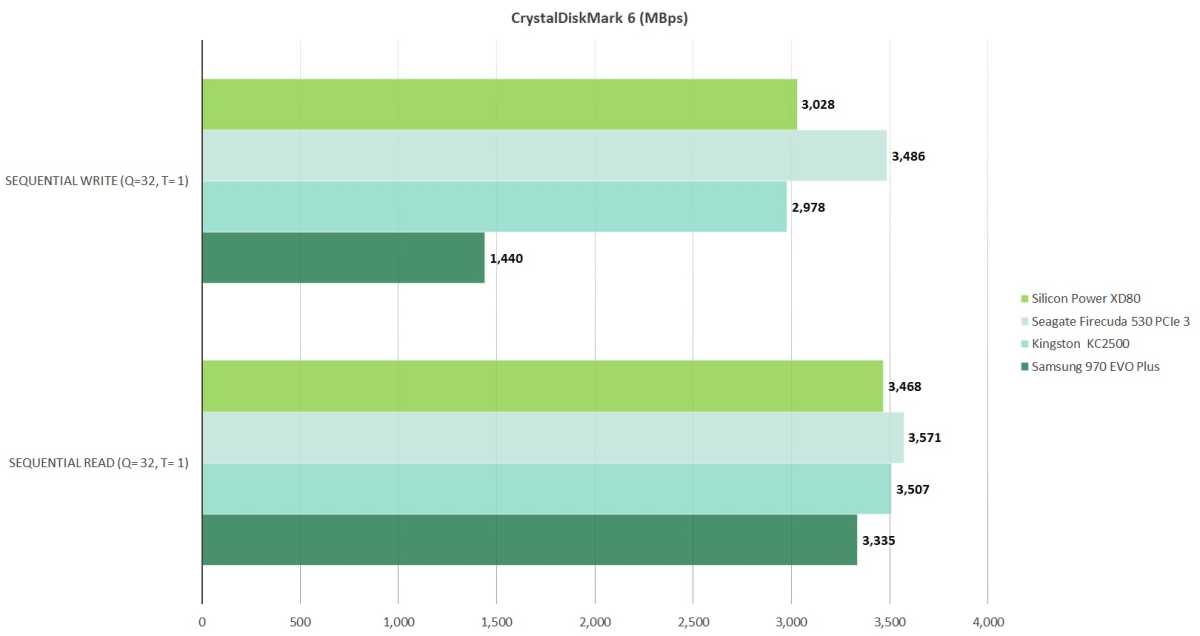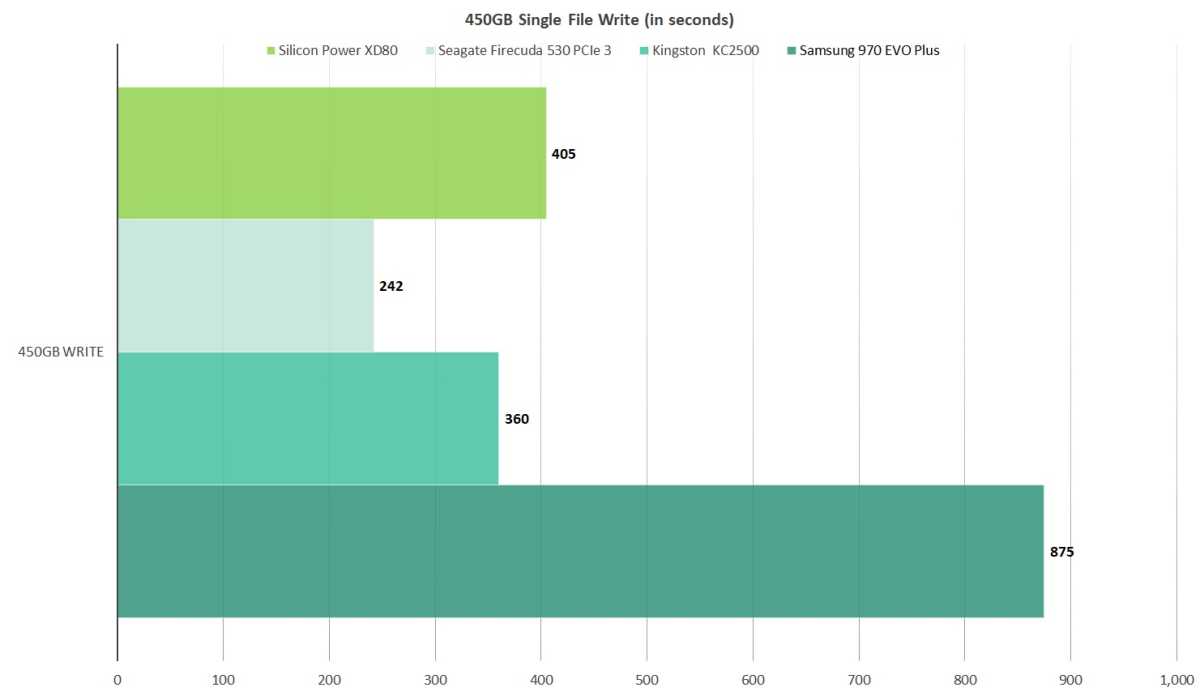At a glance
Expert’s Rating
Pros
- Good performance
- Very affordable
- Included heat spreader
Cons
- Components may change
- 512GB and 2TB models not readily available at the time of this review
Our Verdict
Silicon Power promises 3400MBps reading/3000MBps writing with the XD80 and delivers it for a very reasonable price
Price When Reviewed
$109 for 1TB | $220 for 2TB
Best Prices Today
$109.99
The Silicon Power XD80 is four lane (x4) PCIe 3 NVMe SSD that is sold in 256GB, 512GB, 1TB, and 2TB flavors—at least theoretically. We tested the $220 2TB version, but it’s difficult to find in stock online, with only the $110 1TB flavor available at Newegg more times than not. That’s a very good price, especially considering what turned out to be very solid performance. Oddly enough, the drive can’t be purchased in Silicon Power’s Amazon store, and we haven’t seen the smaller capacities available whatsoever.
Specs
Silicon Power told us that depending on the model, the XD80 uses either 72- or 96-layer 3D TLC NAND. We’re assuming the former is on the lower-capacity models. The NAND parts on our 2TB test drive sported a number that revealed nothing in a Web search, but the controller was a Phison PS5012-E12S and there was 2GB of DRAM primary cache. Secondary cache is TLC written as SLC (Single Level Cell/1-bit) to the tune of 12GB in the 1TB model and 24GB in the 2TB capacity.
Silicon Power indicated to us that different controllers and NAND might be employed over the life of the product. Kudos to the company for being honest, but that does mean our test numbers shown below are a bit soft. The spec sheet promises at least 3GBps sustained writing and 3.4GBps sustained reading. If your numbers are significantly lower than that, let us know.

If you’ve ever wondered why it’s called “level” in NAND names, it’s because the contents of the cell are actually determined by the voltage level contained within. SLC has only two voltage levels, representing 0 and 1, while TLC has eight levels representing the values 0 through 7.
The drive is warrantied for five years, with the 256GB capacity rated for 200TBW, the 512GB for 400TBW, the 1TB for 800TBW, and the 2TB for 1600TBW. “TBW” stands for the number of TeraBytes that can be Written over the life of the drive. Exceed those within the warranty period, and the overrun supersedes your warranty in most cases. Those are the ratings directly from Silicon Power, though I’ve actually seen higher TBW ratings cited in other reviews.
Performance
The 2TB Silicon Power XD80 is very good every day performer. Not quite top-tier, but considering the price, very good. It even managed to write our massive 450GB test file in a reasonable amount of time. CrystalDiskMark 6 (shown below) rated it as very competitive.

Our 48GB real world transfers revealed much the same story. Only the scorching Seagate FireCuda 530 was faster than the XD80 in these tests. Note that lower capacity drives will not perform as well, with the most noticeable drop being in sustained write performance.

As you can see below, the XD80 wasn’t in the same league as the FireCuda 530 writing our large 450GB file. It was also outpaced by the Kingston KC2500. On the other hand, it easily outperformed the Samsung 970 EVO Plus–a drive that’s a rather tragic testimony to what happens when you write at the native bit-depth to slow NAND.

The PCIe 3 tests utilize Windows 10 64-bit running on a Core i7-5820K/Asus X99 Deluxe system with four 16GB Kingston 2666MHz DDR4 modules, a Zotac (NVidia) GT 710 1GB x2 PCIe graphics card, and an Asmedia ASM3242 USB 3.2×2 card. It also contains a Gigabyte GC-Alpine Thunderbolt 3 card, and Softperfect Ramdisk 3.4.6 for the 48GB read and write tests.
The PCIe 4 testing was done on an MSI MEG X570 motherboard socketing an AMD Ryzen 7 3700X 8-core CPU, using the same Kingston DRAM, cards, and software. All testing is performed on an empty, or nearly empty drive that’s TRIM’d after every set of tests. Performance will decrease as the drive fills up.
Note that some vendors have been swapping slower parts into their drive after reviews have posted. Please inform us if your drive’s performance, given similar hardware, varies significantly from what we saw.
Conclusion
All told, the 2TB XD80 is a very good performer at a very attractive price. As long as Silicon Power meets its stated performance metrics, it’s a fantastic bargain for PCIe 3 computers—assuming you can actually find it for sale.
Jon is a Juilliard-trained musician, former x86/6800 programmer, and long-time (late
70s) computer enthusiast living in the San Francisco bay area. [email protected]

